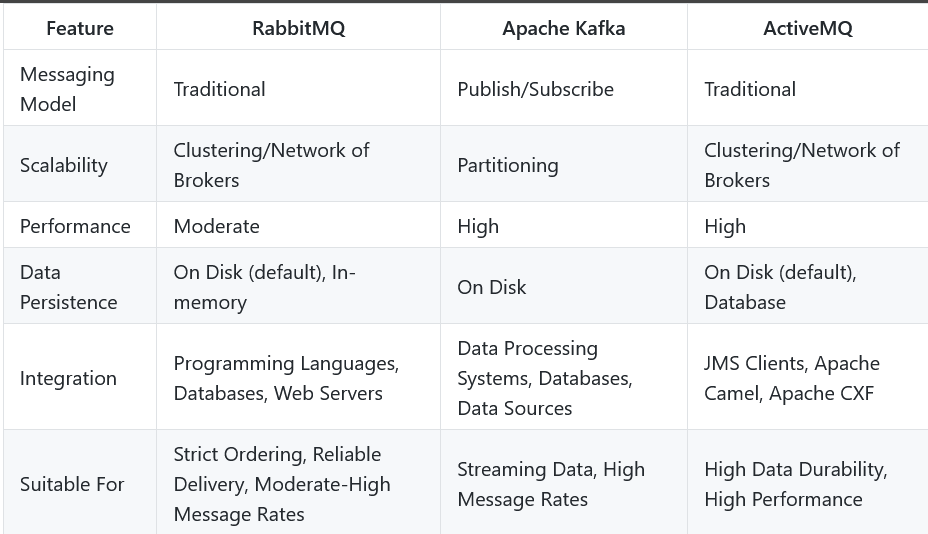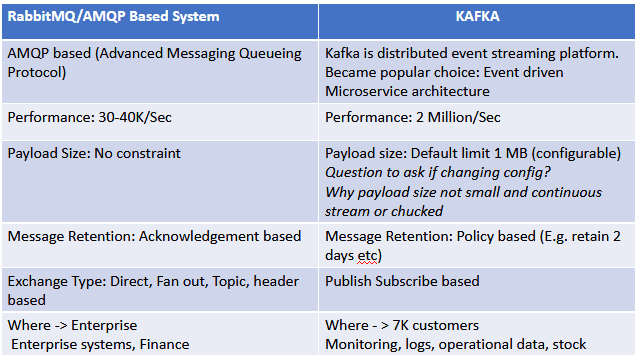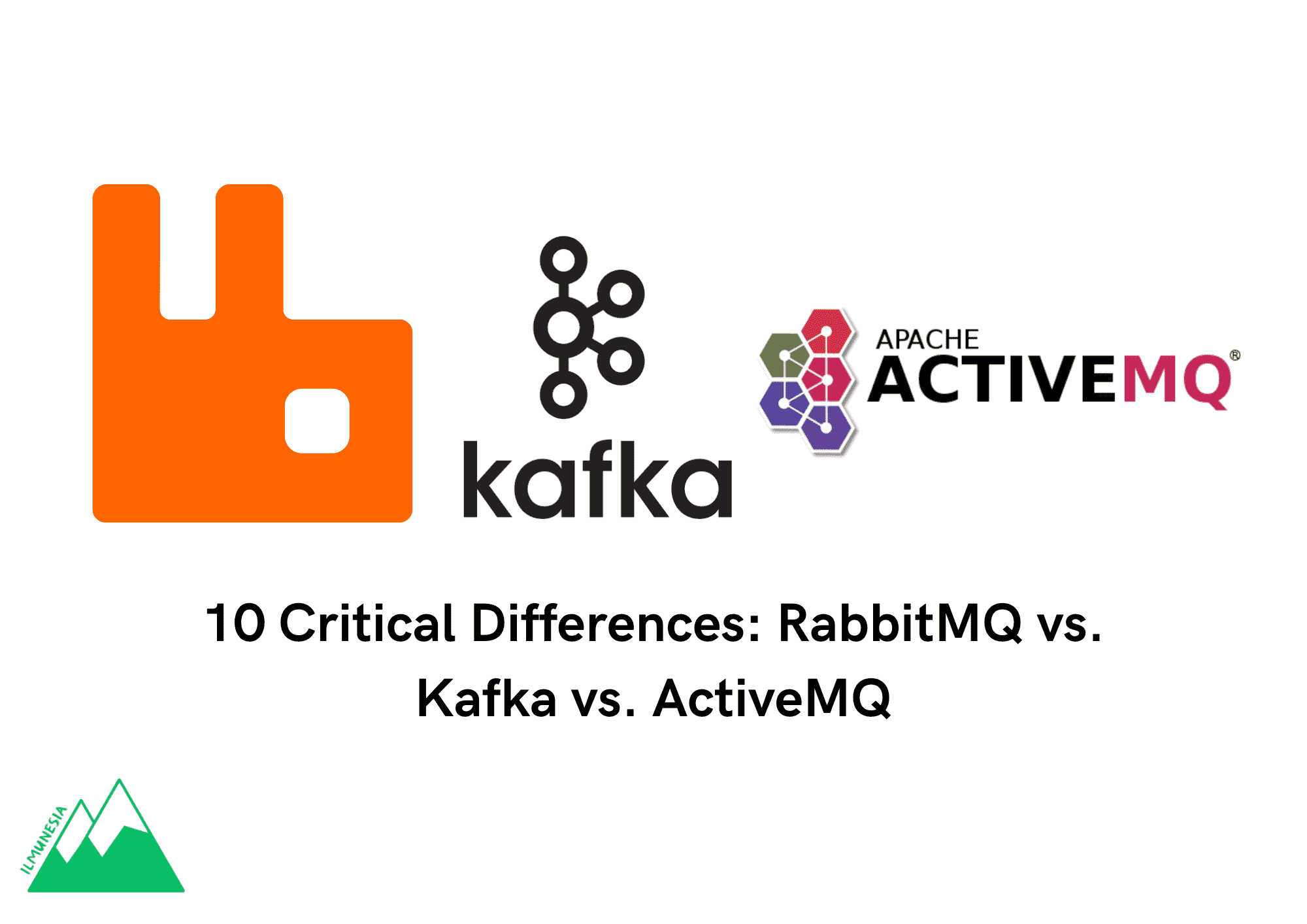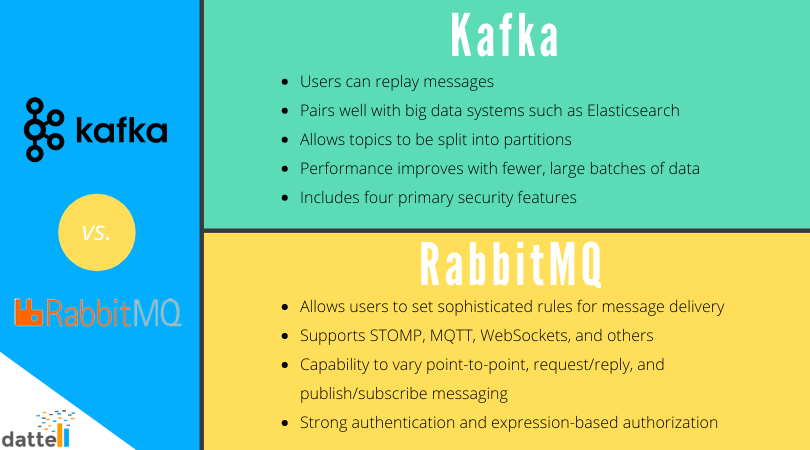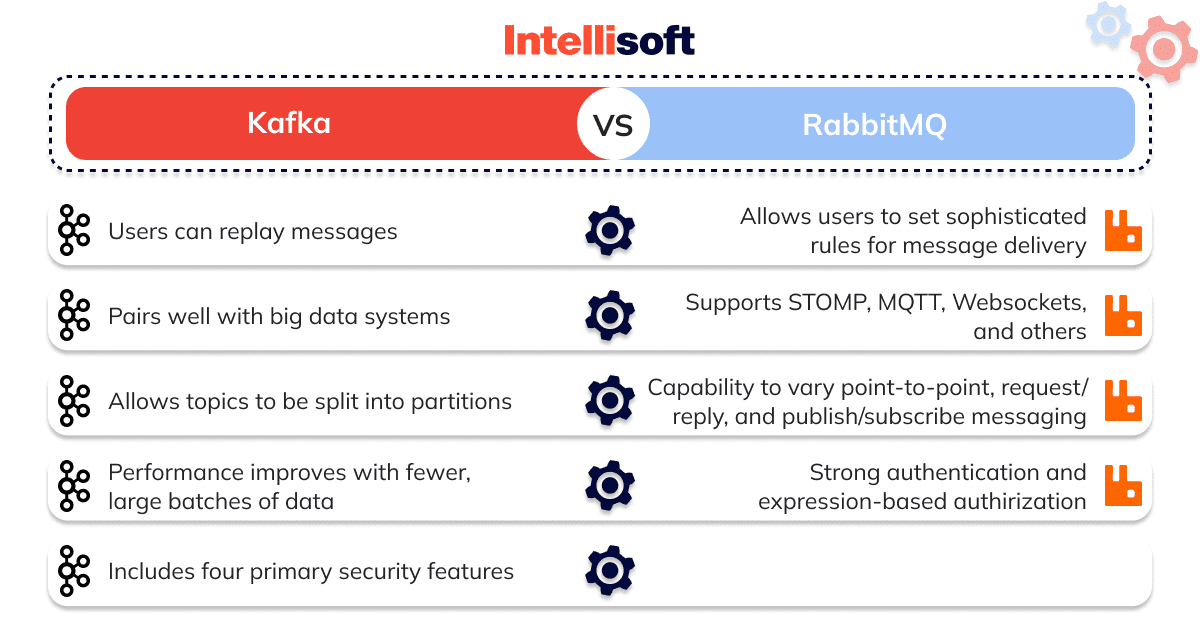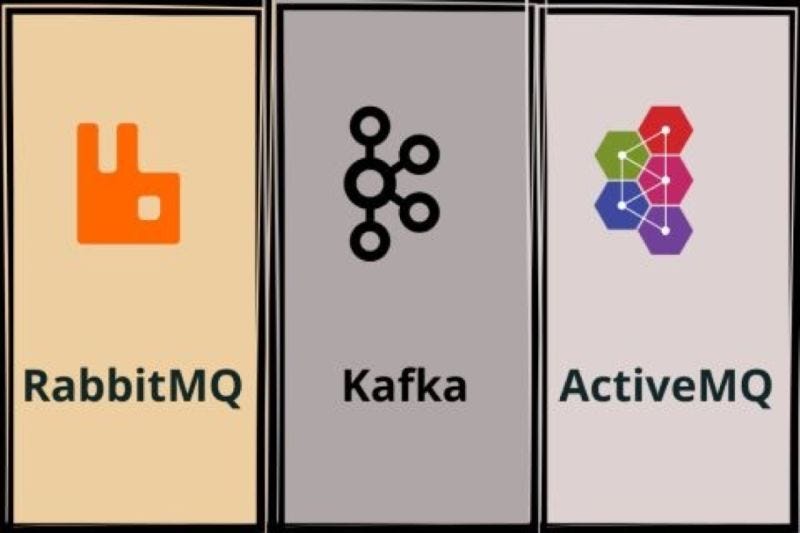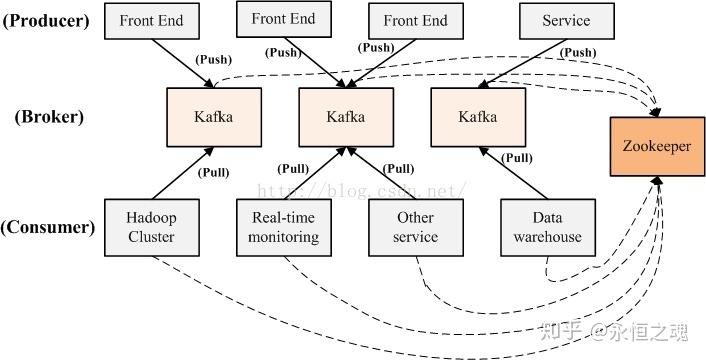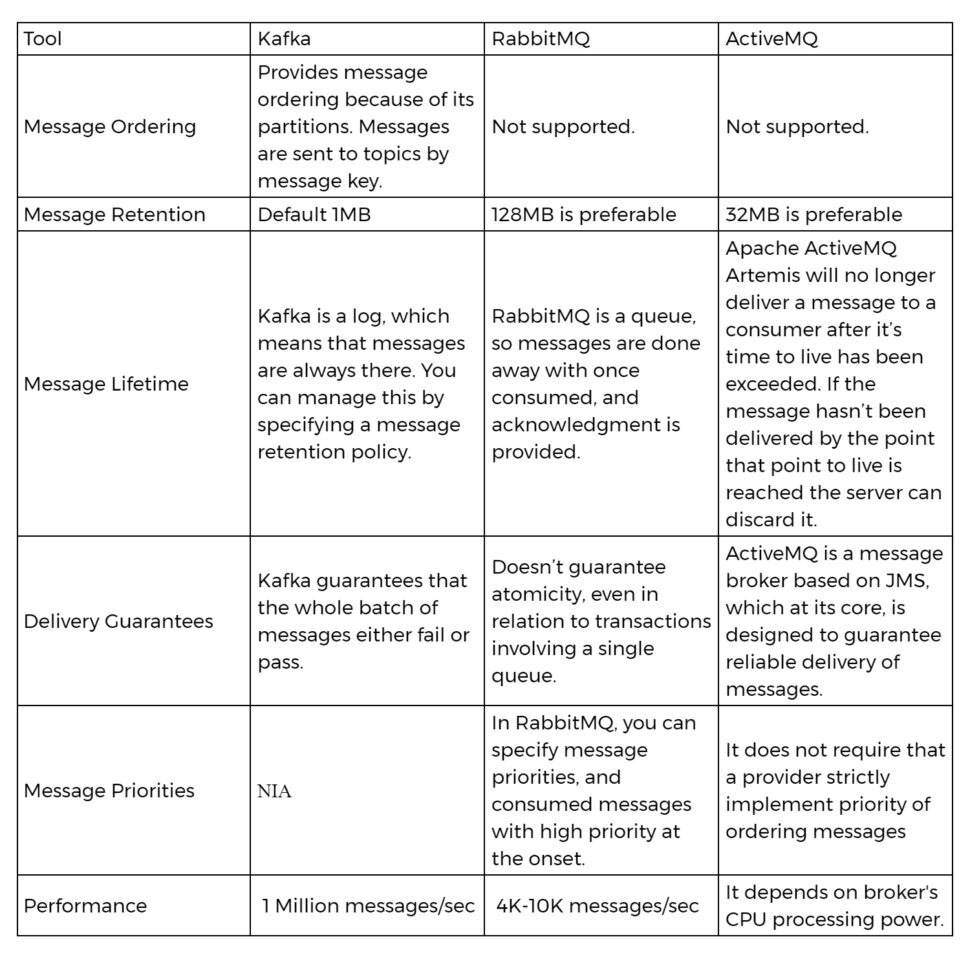Rabbitmq Vs Kafka Vs Redis Vs Activemq
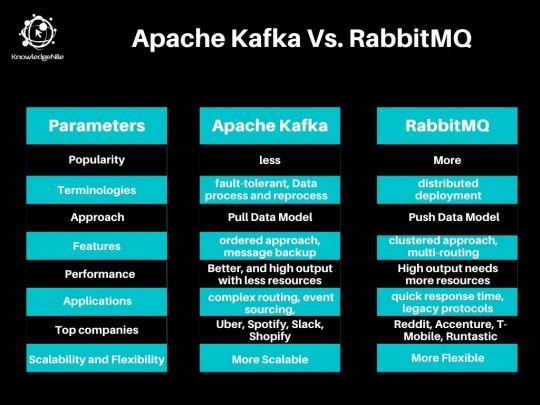
In today's data-driven landscape, the efficient and reliable movement of information is paramount. Businesses are increasingly reliant on asynchronous messaging systems to decouple applications, process data streams, and build responsive architectures. The choice of the right messaging platform can significantly impact performance, scalability, and cost.
Understanding the subtle differences between popular options like RabbitMQ, Kafka, Redis, and ActiveMQ is no longer a luxury but a necessity. This article delves into the core functionalities, strengths, and weaknesses of each platform, providing insights to guide informed decision-making when selecting the appropriate messaging solution for your specific needs. We will examine their architectural approaches, messaging models, performance characteristics, and typical use cases.
RabbitMQ: The Versatile Message Broker
RabbitMQ, a mature and widely adopted message broker, is known for its flexibility and support for various messaging protocols including AMQP, MQTT, and STOMP. It uses a traditional message queue model, where messages are routed to specific queues based on predefined exchange rules.
It excels in complex routing scenarios and supports features like message acknowledgment, persistence, and dead-letter exchanges. RabbitMQ's strengths lie in its robustness and ability to handle diverse workloads, making it suitable for enterprise applications requiring reliable message delivery and intricate routing logic.
However, RabbitMQ's performance may be limited when dealing with extremely high throughput data streams compared to specialized streaming platforms like Kafka. Its architecture is not inherently designed for the massive parallelism and scale that Kafka provides.
Kafka: The Distributed Streaming Platform
Kafka, originally developed at LinkedIn, is designed for high-throughput, fault-tolerant data streaming. Its architecture revolves around the concept of distributed, partitioned, and replicated logs, enabling it to handle immense volumes of data with low latency.
Unlike traditional message queues, Kafka persists messages for a configurable duration, allowing multiple consumers to process the same data stream independently. This characteristic makes Kafka ideal for use cases like real-time analytics, event sourcing, and log aggregation, where data needs to be replayed and processed by different systems.
Kafka can be more complex to set up and manage than RabbitMQ, especially for smaller-scale applications. Its focus on high throughput sometimes comes at the expense of message ordering guarantees in certain configurations.
Redis: The In-Memory Data Structure Store
Redis is primarily known as an in-memory data structure store, but it also offers pub/sub capabilities that can be used for simple messaging scenarios. Its strength lies in its speed and low latency due to its in-memory nature.
Redis pub/sub is well-suited for real-time applications requiring low-latency message delivery, such as chat applications, live dashboards, and real-time gaming. However, it lacks features like message persistence and guaranteed delivery, making it unsuitable for critical applications requiring reliable messaging.
Messages are not stored and are lost if no subscriber is connected when a message is published. Redis pub/sub should be reserved for scenarios where data loss is acceptable and low latency is paramount.
ActiveMQ: The JMS Standard Bearer
ActiveMQ is a popular open-source message broker that implements the Java Message Service (JMS) API. This makes it a natural choice for Java-based enterprise applications that need to adhere to the JMS standard.
ActiveMQ supports various messaging protocols and offers features like message persistence, transactions, and message grouping. It is well-suited for integrating Java applications within an enterprise environment.
While ActiveMQ remains a viable option, it may not offer the same level of performance and scalability as Kafka for high-throughput data streaming scenarios. Furthermore, its configuration can be complex.
Key Considerations for Choosing a Messaging Platform
When selecting a messaging platform, several factors should be taken into account. These include the required throughput, latency requirements, message durability needs, complexity of routing rules, and the existing infrastructure.
If high throughput and fault tolerance are essential, Kafka is the clear choice. For complex routing scenarios and guaranteed delivery, RabbitMQ is a robust option. Redis is suitable for low-latency, non-critical messaging. ActiveMQ remains relevant for Java-based systems adhering to the JMS standard.
It's also crucial to consider the operational overhead and the expertise required to manage each platform. A thorough evaluation and proof-of-concept testing are recommended before making a final decision.
The Future of Messaging
The world of asynchronous messaging is constantly evolving. Cloud-native messaging services, such as those offered by AWS, Azure, and Google Cloud, are gaining popularity due to their scalability, ease of management, and integration with other cloud services. These services often provide managed versions of Kafka, RabbitMQ, and other messaging platforms.
The trend towards event-driven architectures and microservices is further driving the demand for robust and scalable messaging solutions. As businesses continue to generate and process vast amounts of data, the importance of choosing the right messaging platform will only increase. Careful evaluation of requirements and platform capabilities is key to building resilient and responsive systems for the future.
